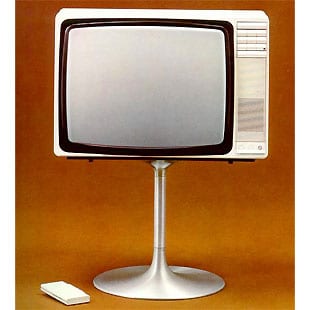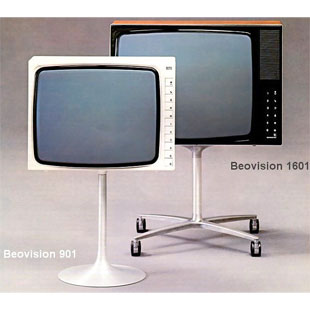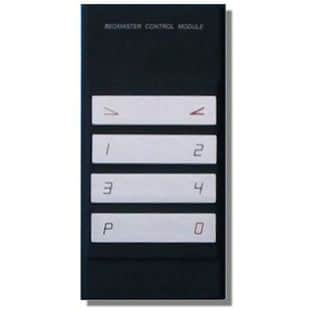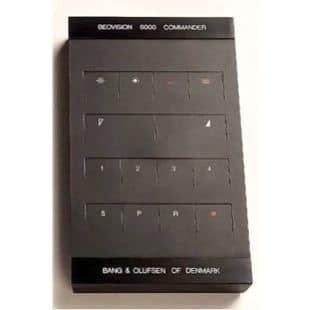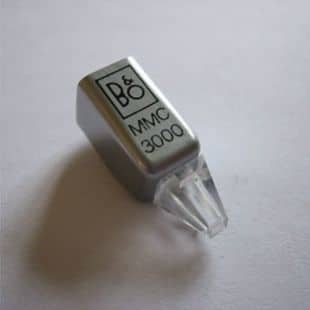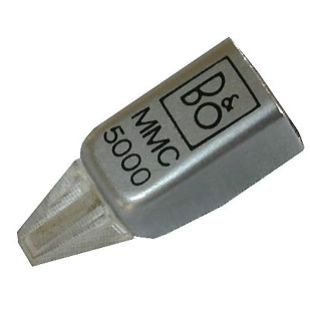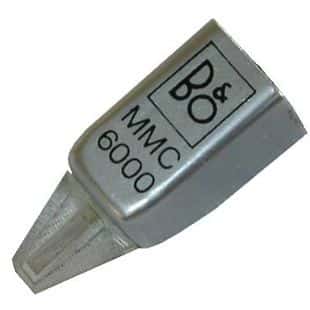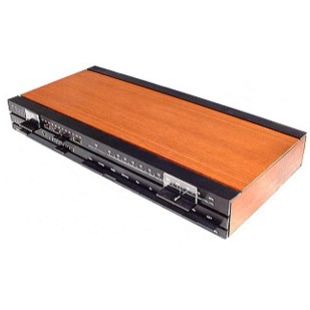BeoVision 3702
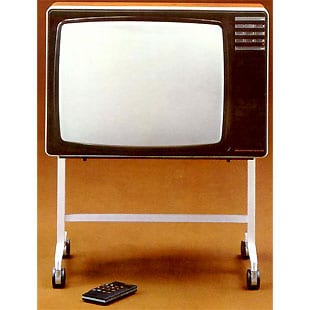
Beovision 3702 was a 56cm colour TV with small outer dimensions, a highly advanced construction throughout and the most logical operation facilities then on the market.
The ultrasonic remote control was designed to be operated with one hand and its most important regulators could be ‘read’ by the finger tips. These regulators – for brightness, colour saturation and sound are set in relief, so there was no need to look. The user could feel which position was which by the tactile buttons.
Any of eight pre-set stations could be called, and, by pressing the special reset facility, all adjustment levels including sound, would revert to their predetermined basic levels.
Beovision 3702 could be switched off at the main ‘off button on the set’s simple operation panel. Or one could switch it off with the remote control module in which case, the set goes into stand-by position. By pressing one of the programme selectors there is a picture on-screen within 5 seconds together with sound. The picture tube was of the in-line type which needed fewer adjustments and consumed less power – only 115 watts.
The chassis was modular and there was an automatic cut-off regulating circuit to maintain long-term colour purity. Beovision 3702 could accommodate a VCR without further technical adjustment and could be fitted with a special optional kit to reproduce sound through a hi-fi system. Two pre-stamped blanks on the set’s fascia allowed for the insertion of a headphone or extension speaker terminal and switch.

